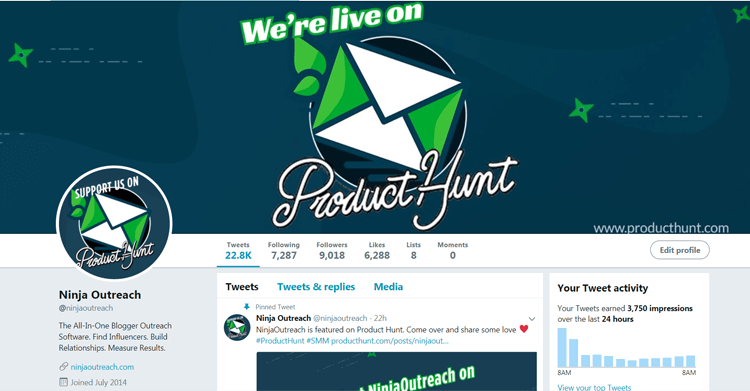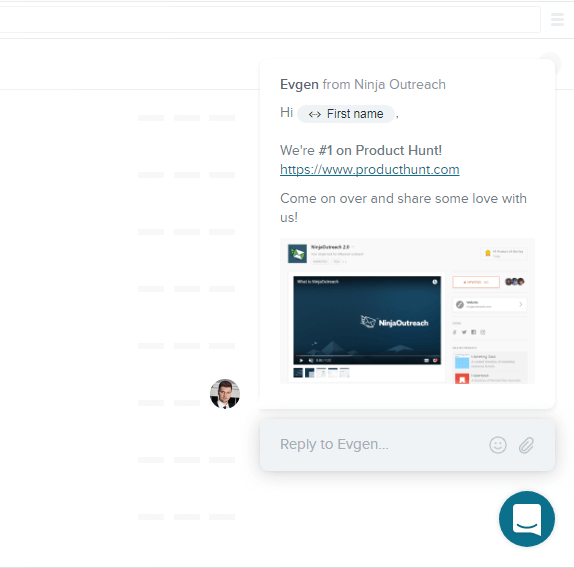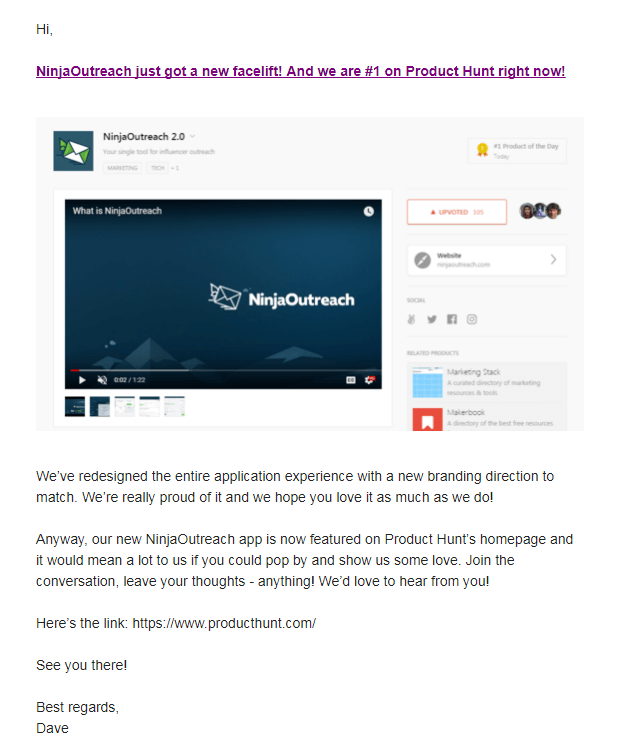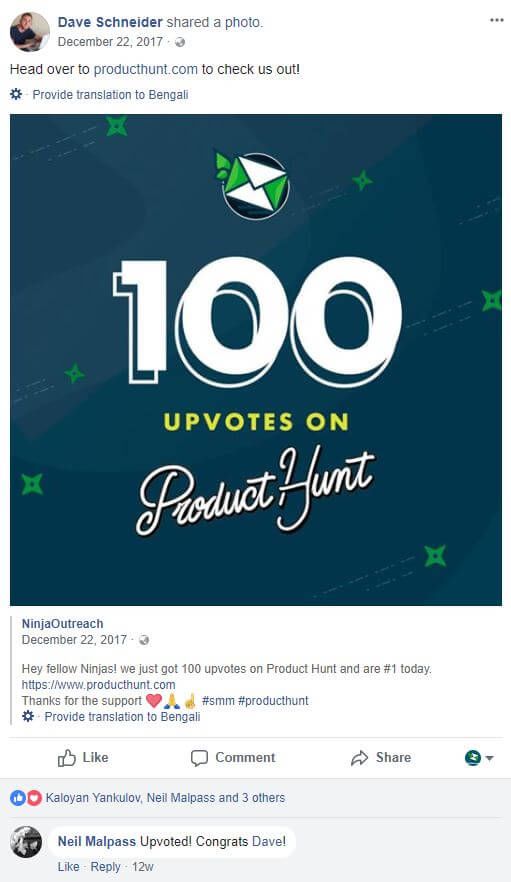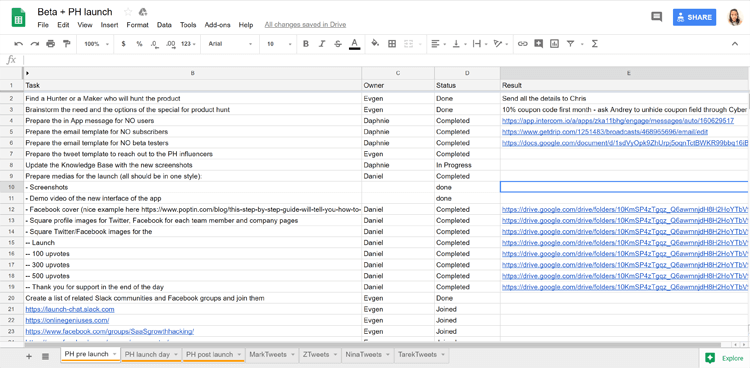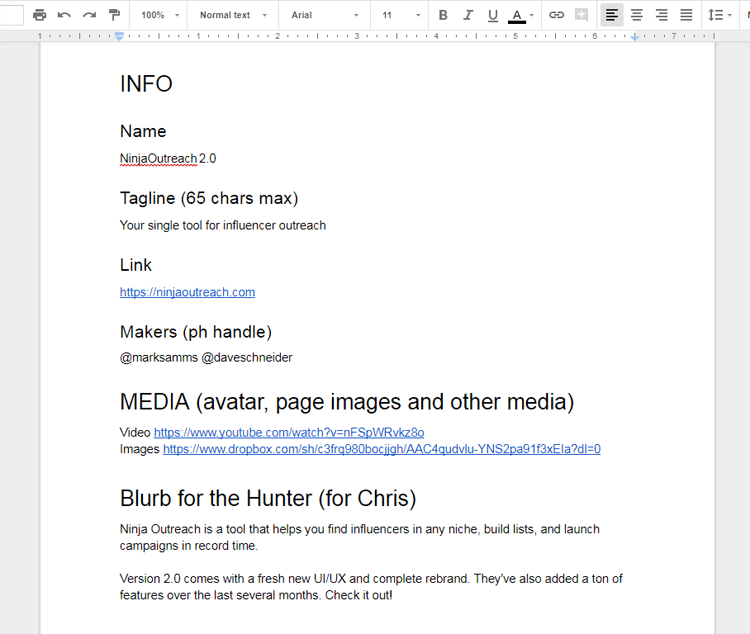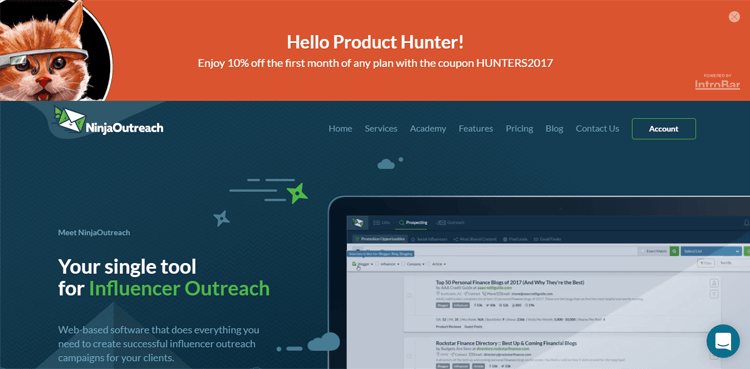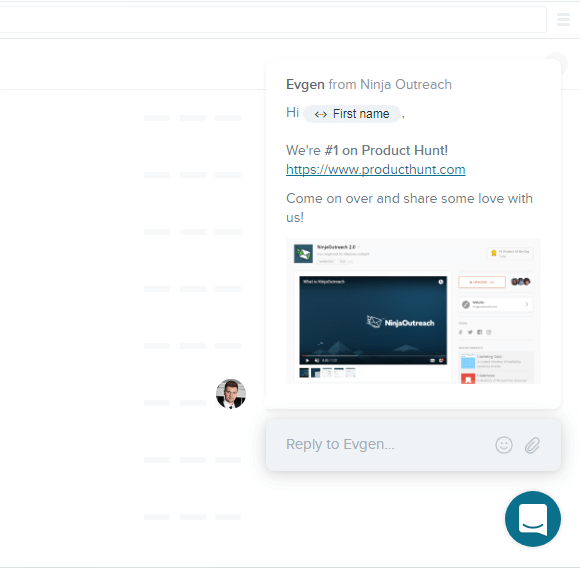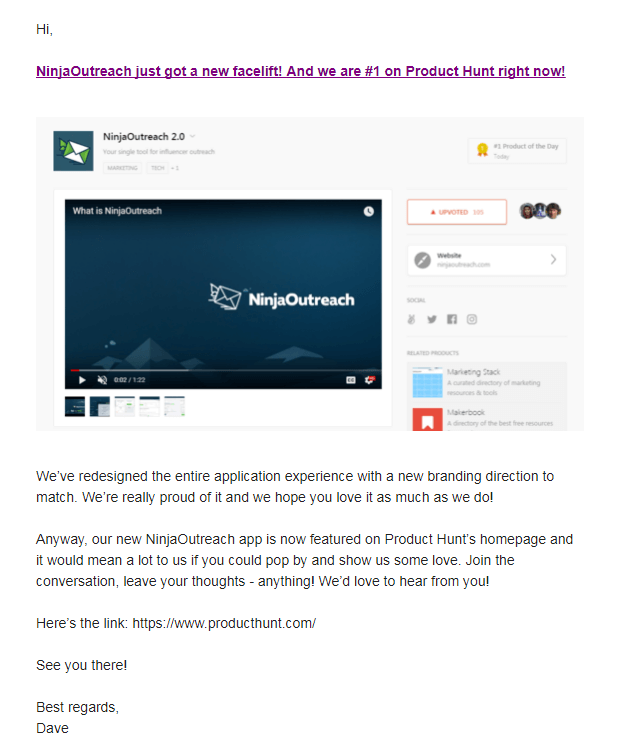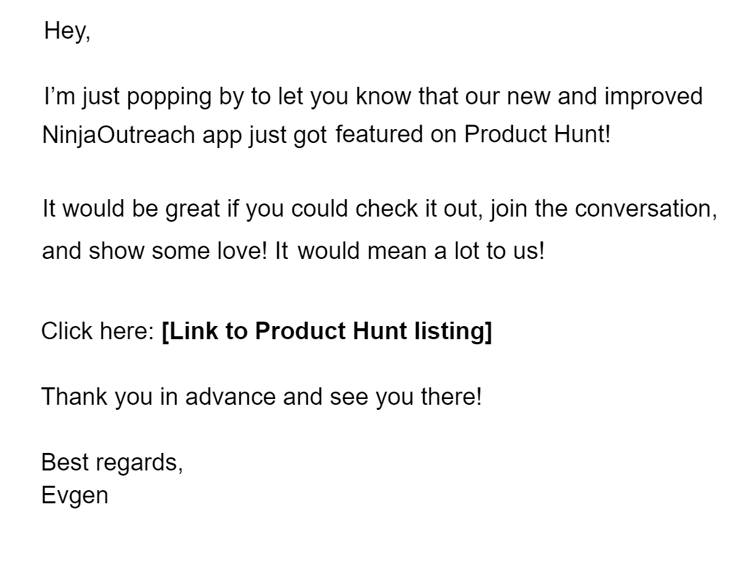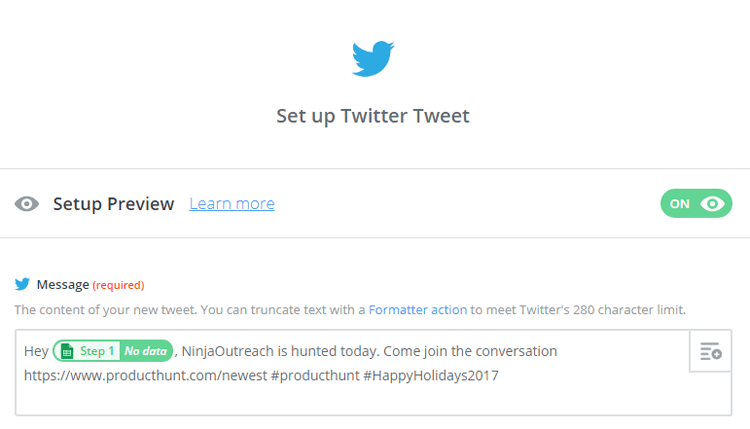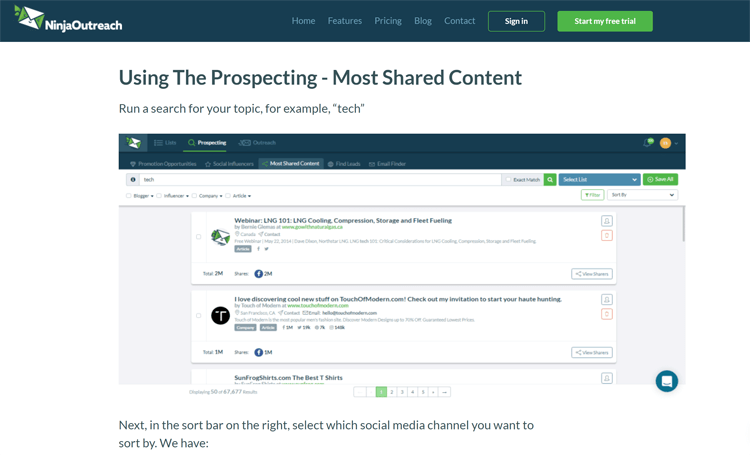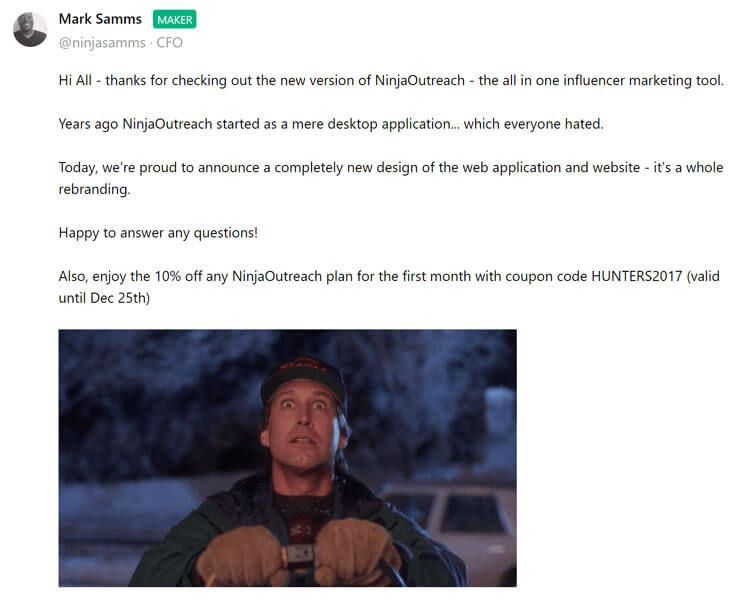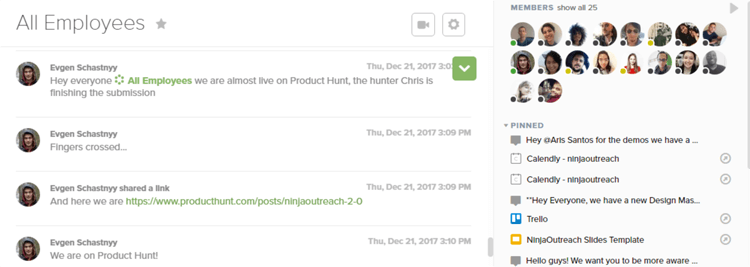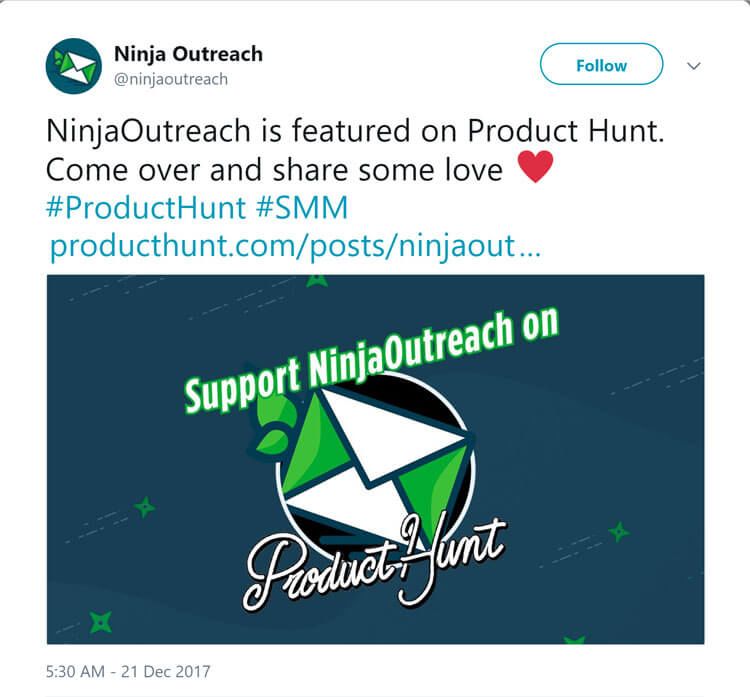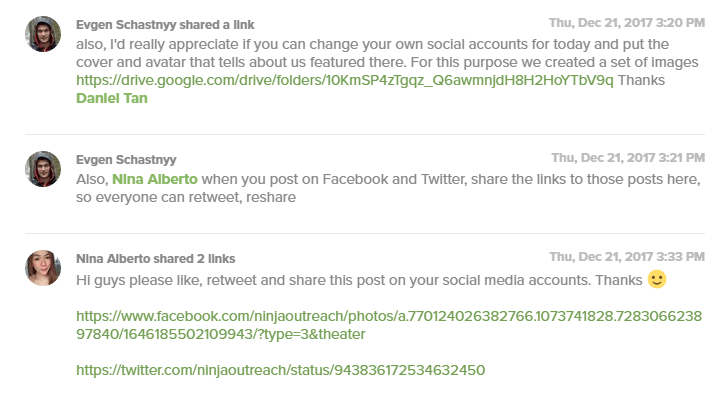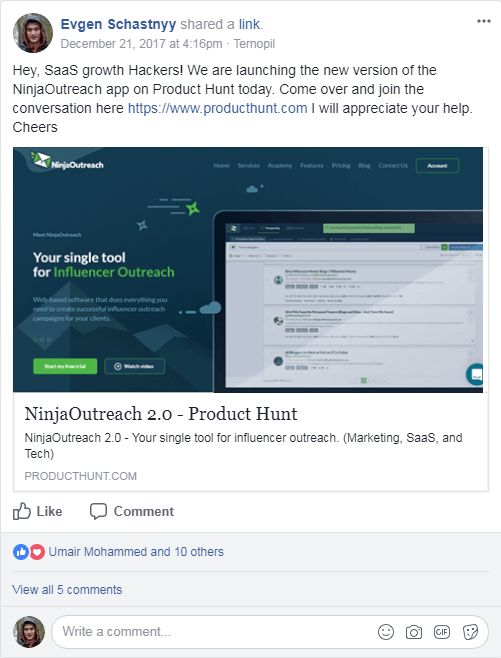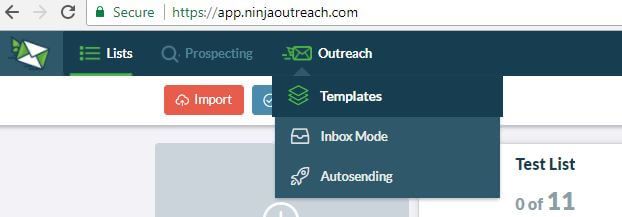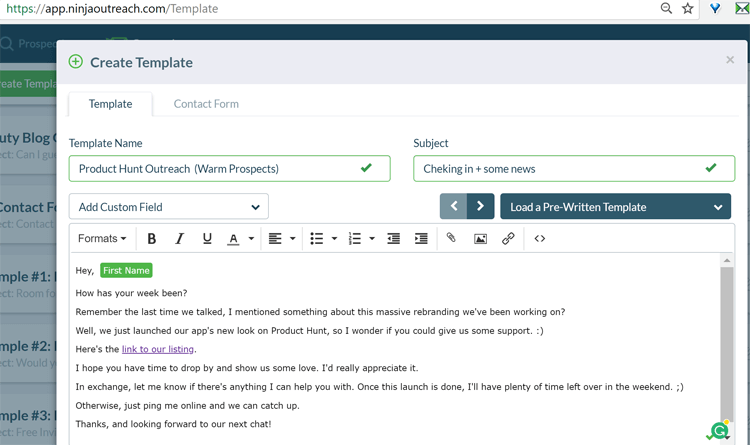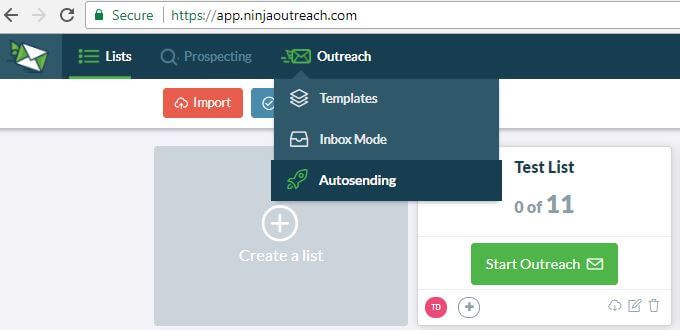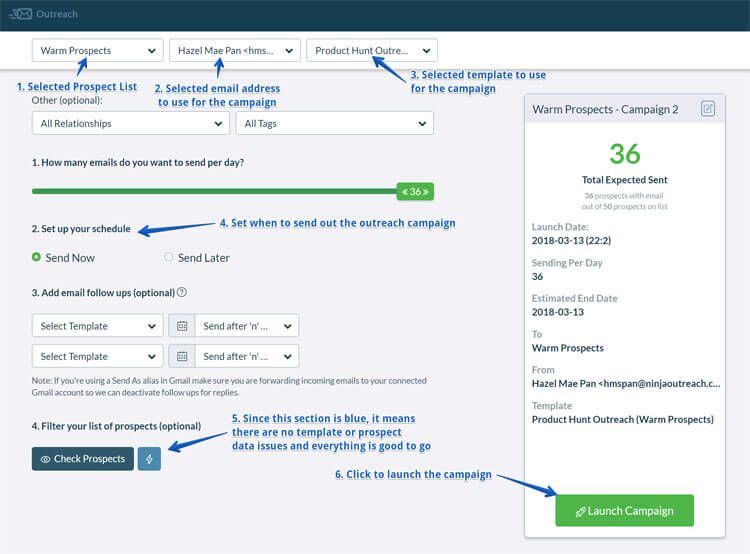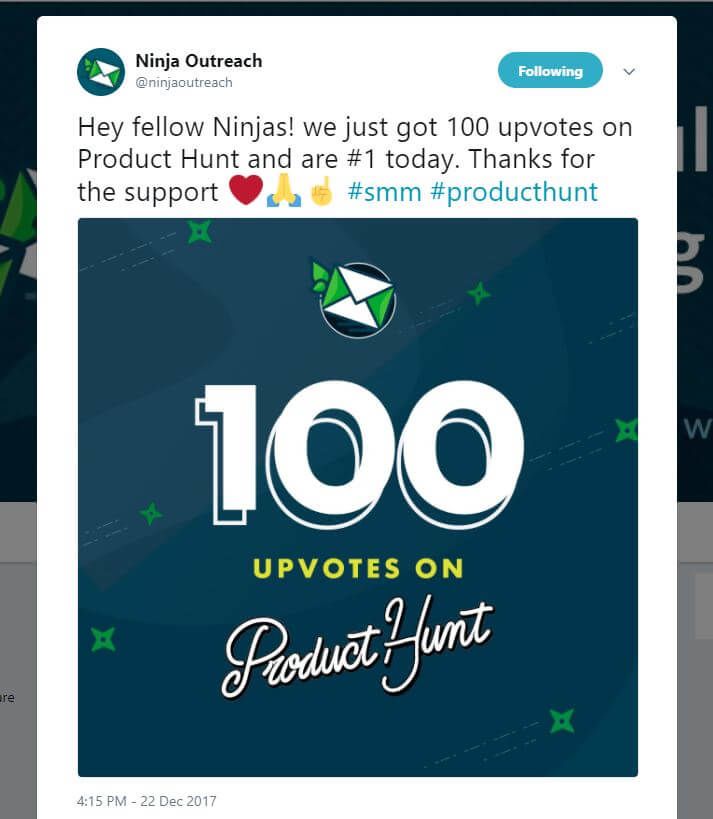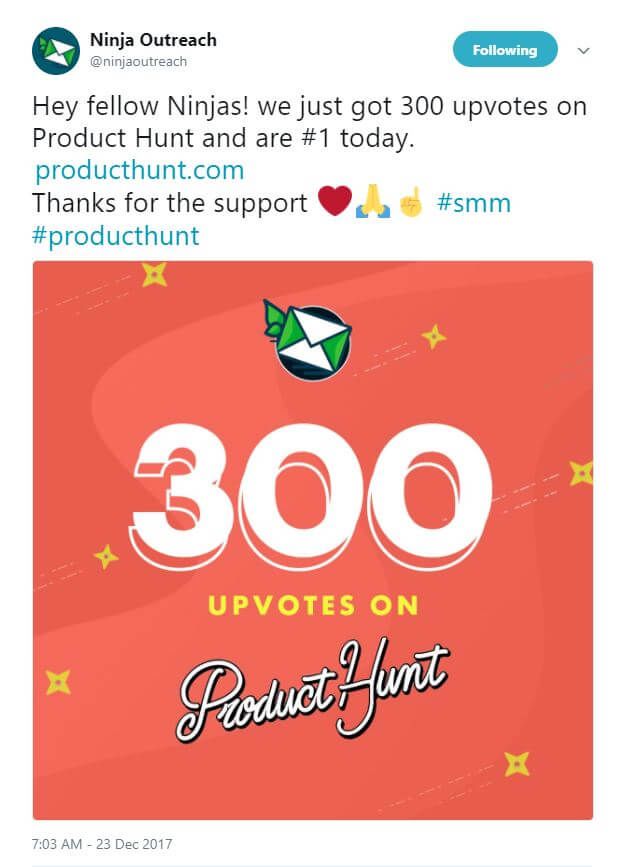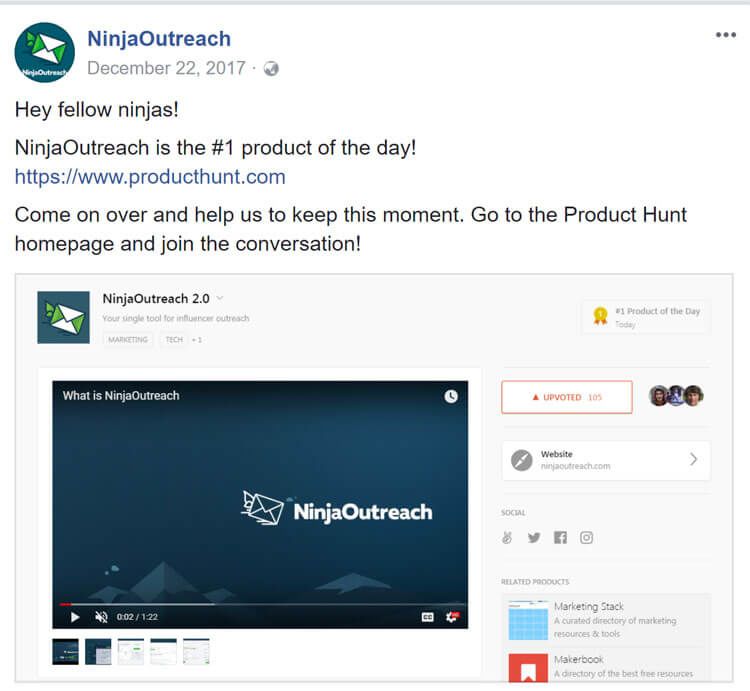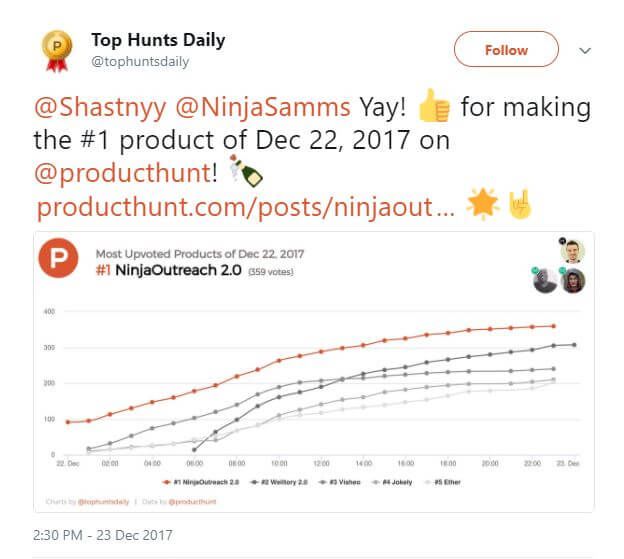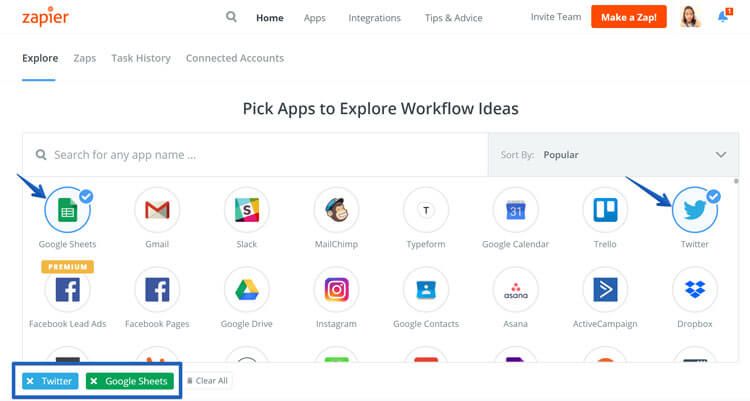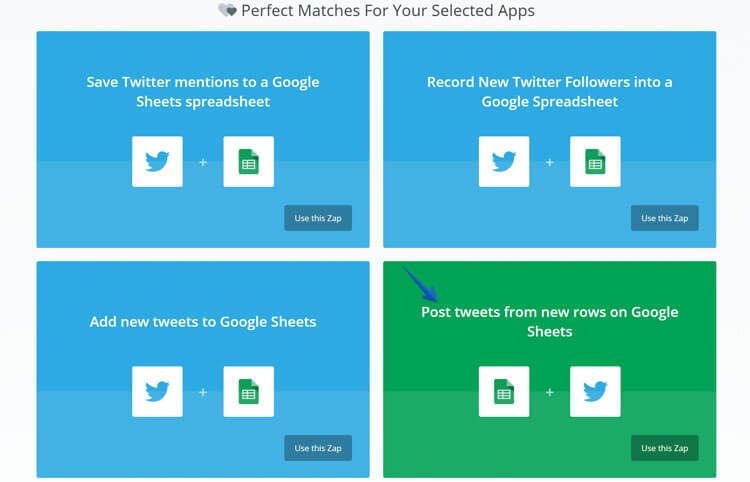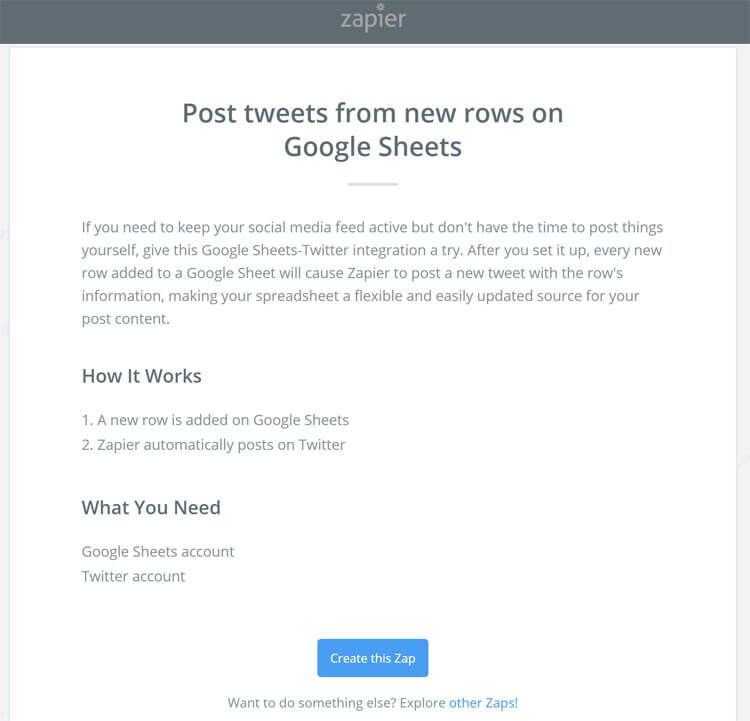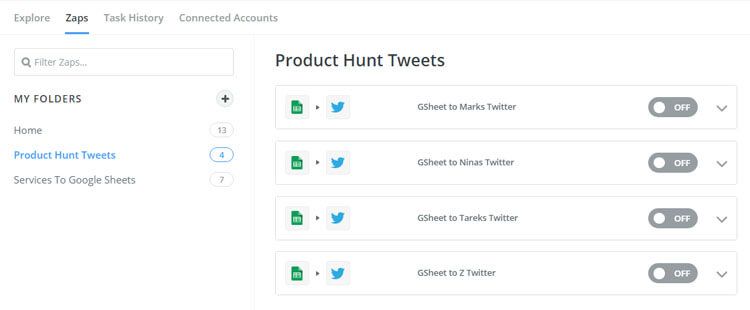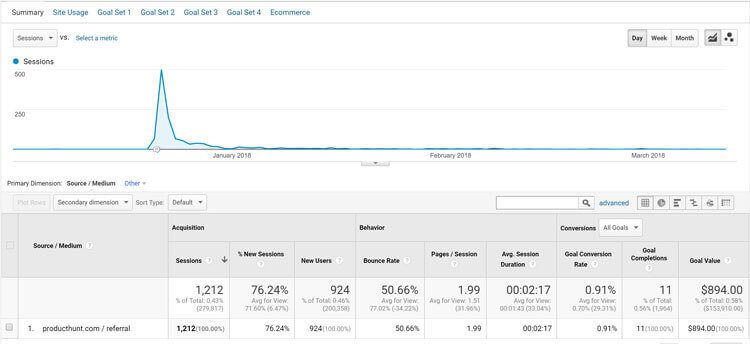Friday, 30 March 2018
A Comprehensive Guide to Evergreen Content
Often, we think that our hard work is done after we finished building our websites.
Then we realize that it’s important to sustain it with regular content because that’s the only way to grow your visibility and improve SEO.
If you’ve been creating content for some time already, perhaps you heard the term evergreen content.
Evergreen content is the kind of content that will remain relevant and useful to your readers for years to come.

Despite the changes that may happen in your niche, you can easily edit an evergreen piece of content to keep it updated.
In this blog post, we’re going to take a closer look at evergreen content.
We will explore what evergreen content is and is not, why it matters, and helpful tips to create it. So, let’s get started.
What is Evergreen Content?
As what I just mentioned, evergreen content hardly changes with time.
It is timeless and retains its real value in the midst of change.
Distinguishing evergreen from non-evergreen content is easy.
For example, an announcement about a recent product launch or content about a particular season is not evergreen.
These kinds of pieces will be obsolete when the occasion ends.
Fashion trends and other time-sensitive topics are also non-evergreen.
Here are some more examples of evergreen content:
- How-to content
- Tips and tricks
- Comprehensive guides
- Case studies
- Product reviews
- Tutorial videos
Now let’s consider the two topics below and identify which of the two is evergreen and non-evergreen:
- How to Find a Profitable Blogging Niche
- 2017 Blogging Trends You Should Know
Without a doubt, topic A “How to Find a Profitable Blogging Niche” is evergreen while B is not.
Since you already know what evergreen content is, let’s explore its benefits for your content marketing strategy.
Benefits of Evergreen Content
Content that never gets old has a ton of benefits that will actually take your blog to greater heights.
Here are some ways evergreen posts positively influence your marketing campaigns.
Ongoing traffic
You can be sure that when you hit publish, your content will continue to attract audiences.
For example, a guide on how to lose weight still works a couple of years from now.
As long as your content is still live on your site, people are more likely to find it regardless of the time period.
More backlinks
Building quality backlinks to your site can be a challenging process.
This is true if you do it manually. Since evergreen topics retain their quality for a long time, it can generate an endless stream of backlinks. Your SEO improves.

Reduces your workload
Many bloggers feel pressured to publish new content on a daily basis.
This is especially true with blogs focused on news.
When starting your own WordPress blog, make sure you choose an evergreen niche.
That way, you can focus on creating content only during selected days of the week and give more time for other tasks.
How to Create Evergreen Content
1. Target your content for beginners.
When writing evergreen content, it’s important to write for beginner learners.
People eager to acquire information usually know very little about your topic.
While you may be tempted to discuss advanced topics, remember that experts are less likely to scour the web for knowledge.
If you should write advanced topics, it’s best that you start with the most basic ones.
Then you can move on to intermediate and difficult. That way, your audience can progress along with your content.
Sites like eHow.com and Wikipedia.com are popular places that publish beginner-level posts.
Just check out the content below from eHow on container vegetable gardening:
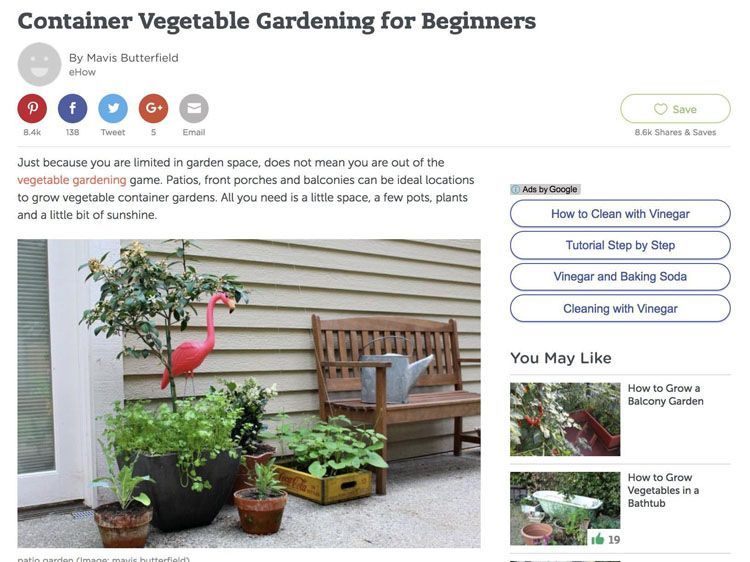
Notice that this post got over 8k pins on Pinterest. Meaning, it has effectively captured the interest of its target audience.
Also, note that this beginner blog post uses simple language.
As much as possible, do away with jargon terms because they only confuse your reader.
2. Link internally to related blog posts.
The screenshot of eHow’s post above has one internal link, with the anchor text vegetable gardening, pointing to a piece on the same topic.
We’ve heard this piece of advice time and again. Internal linking is an important technique to follow when it comes to evergreen posts.
Not only does it help spread SEO juice across your website, promote crawlability, and establish structure.
More importantly, it creates a seamless, positive experience for your readers. People can better navigate your site.
If your content lacks internal links, you better start including them.
A good practice would be to identify related topics and link them together.
With this, you create a content silo.
3. Do keyword research properly
By now you already understand the value that keyword research brings to the table.
Optimizing for keywords allows you to create a more focused content and ensures that the right people will come to your site.
Gone are the days when site owners stuffed their content with the same keywords.
Today, Google prioritizes quality visitor experiences which means that you don’t need to stress about repeating the same words over and over again.
Sprinkle variations of your keywords throughout your content so that it will flow naturally.
To prevent repetition, take advantage of LSI keywords.
LSI or Latent Semantic Indexing refers to terms closely related to your main topic.
By including them in your evergreen content, Google can better understand what your page is all about.
The simplest way to find LSI keywords is to use a free tool.
LSIGraph.com is one tool where you enter your main keyword.
Click GENERATE to get a list of LSI phrases in seconds.
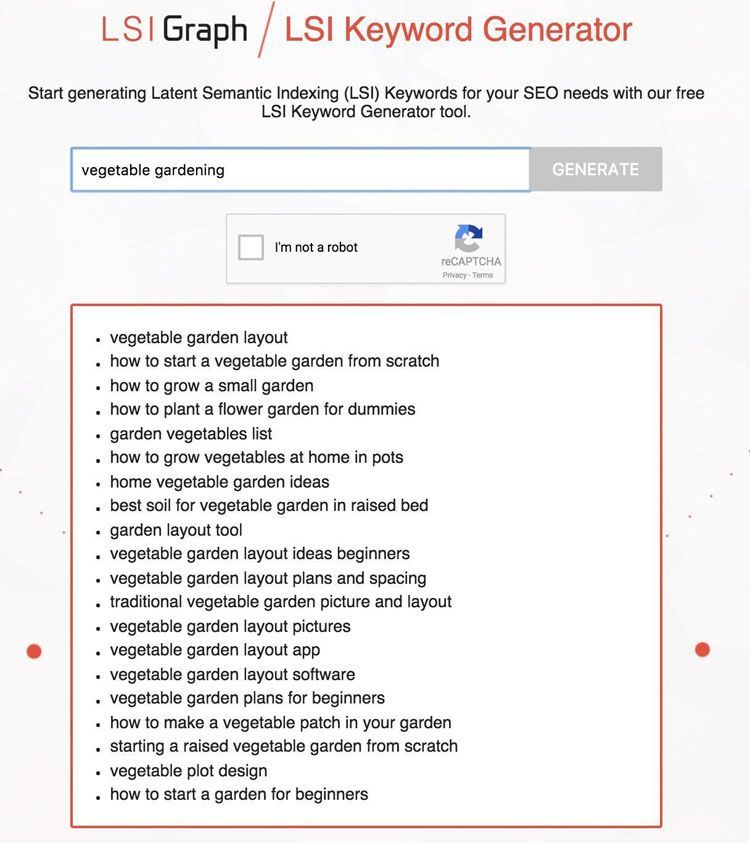
Or, you could do the manual method. Search your topic on Google.
As it shows you results, scroll to the bottom of the page (“Searches related to”).
These are your LSI keywords.
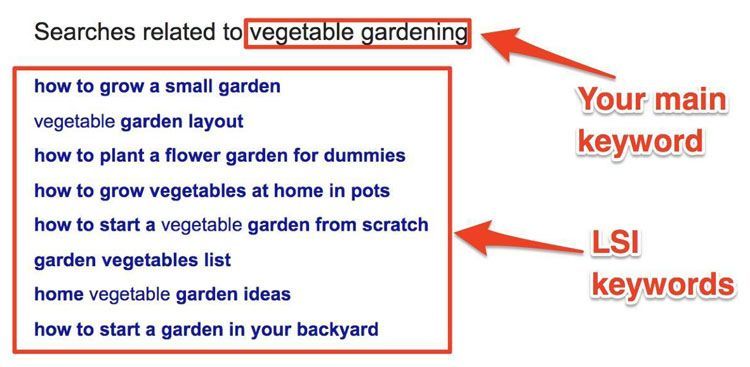
4. Keep your content up-to-date.
A successful piece of evergreen content isn’t created once and left to rot beneath a stream of new blog posts.
To make it prosper and remain useful to readers, make a deliberate effort to update it.
Some details and tips in your piece that used to be relevant may not be applicable today.
So as you check your content from time to time, cross out outdated information and replace it with a relevant one.
Republish and share it for your social media followers and blog audience to read.
This practice will actually benefit you in many ways.
For one, it’ll maximize the full potential of your evergreen post to gain more eyeballs.
Second, you’ll be able to save time and effort in creating content from scratch every time.
Based on a study by Ahrefs on evergreen content, it was shown that content that gets old drops its Google rankings.
One of their blog posts entitled “Dropbox vs. Google Drive — Which Should You Choose?” that was written in 2014 wasn’t updated for 2 years.
As you can see from Ahrefs’ screenshot (below), the traffic of that blog post took a nosedive.

You can just imagine the impact of updating your post with fresh information.
Making updates do not need to be a daunting process.
There are, in fact, simple ways to go about it. Here are some strategies you should apply:
- Edit the publishing date - As you change sections or parts of your content, edit the publishing date so that it appears to have been written recently.
For example, a post that was written in late 2016 should be changed to the most recent date.
That way, your content will also appear at the top of your blog section for everyone to see. - Incorporate relevant keywords - There’s no need for you to do extensive keyword research.
However, just be sure that your keywords remain to be those that will drive traffic to your content.
Also, consider using semantically related phrases. - Add more compelling information - You could share a new angle to an idea or additional strategies (for how-to and list posts).
Not only will this make your evergreen content longer; it will also add depth and insight to your topic.
Like your usual proofreading routine before publishing, check for grammatical and spelling errors.
5. Promote your content as much as you can.
How many times do you think you should promote your content to your audience?
Many bloggers do it once or twice.
Promotion of your evergreen content must be shared across social media platforms several times a week.
On Twitter, Facebook, Instagram, Pinterest, etc.
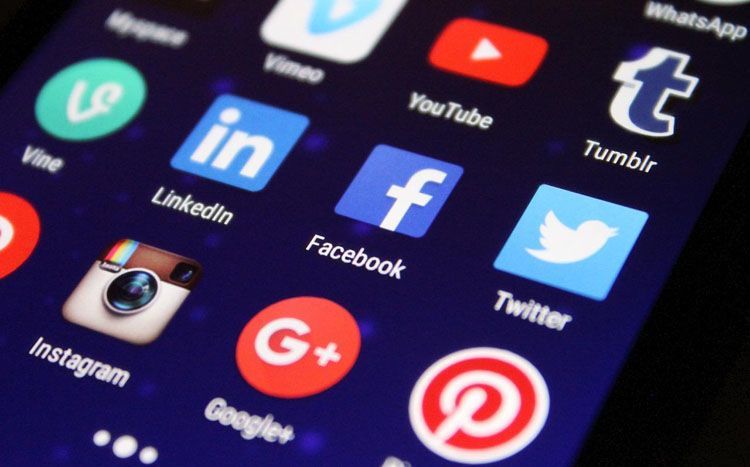
But isn’t this bombarding your audience? The secret to getting your content out without making it redundant is to post it differently each time.
While sharing the same URL, use a different call-to-action.
For example, on Monday, tweet a quote from the post. On Tuesday, share a great comment left by one of your readers.
On Wednesday, express your personal thoughts on the post.
Don’t limit yourself to social media.
Consider other amplification strategies such as comment marketing, engaging in communities like Quora and Reddit, email marketing, and advertising.
Conclusion
Creating evergreen content is an endeavor that pays off for any digital business.
In this article, we discussed what evergreen content is, its different formats, advantages for your brand, and five ways to make it work.
As always, remember to provide value through regular updates, sharing your posts, and following search engine optimization practices.
Kevin Ocasio is a digital marketer and business coach. He dedicates his blog KevinOcasio.com to people looking to learn more about running their own business online.
The post A Comprehensive Guide to Evergreen Content appeared first on NinjaOutreach.
source https://ninjaoutreach.com/evergreen-content-guide/
Thursday, 29 March 2018
Wednesday, 28 March 2018
Tuesday, 27 March 2018
Monday, 26 March 2018
Friday, 23 March 2018
Thursday, 22 March 2018
What Agencies Can Learn About Relationships From SaaS Customer Success Teams
We all know that attracting new clients is exciting, but fruitful, long-lasting customer and client relationships are where service providers build and solidify their reputations. The building, nurturing and growing of customer engagements should be a primary focus across the B2B spectrum, whether you’re selling software – like Sprout – or services, like our agency partners. While we know there are nuances to every type of service-based engagement, we do think there are three key ideas from the SaaS side that can help set your agency up for healthy, long-term client relationships.
Give the Onboarding Process Some Love
At Sprout we have a carefully crafted onboarding experience for our new customers so they have not only the best possible understanding of the software they just bought, but also a clear picture of the services, resources and people available to them to ensure their ongoing success. This focus on the “honeymoon” period of our customer relationships builds trust, establishes boundaries and sets both parties up to get the most out of the union.
Any effective onboarding process should start with asking a lot of questions. Try to understand the expectations that lie beyond the scope of work – nuanced relationship expectations like what types of meetings can be handled over the phone and how quickly the client expects responses during off hours. Setting expectations up front and developing a plan for handling when those expectations aren’t met will help build trust. Transparency from the beginning will help you forcast any issues and ensure that your ways of working together are complimentary.
Evolve From ‘Client Service’ to ‘Client Success’
Contrary to popular agency mythology, no individual person owns the relationship with the client. Building that connection should be part of every interaction anyone from your agency has with the client team, because a deep relationship is about far more than their satisfaction with the services you’re providing. It’s about making sure they feel a holistic, emotional connection to your people, your work and the value you provide. If ‘client service’ is focused on the health of the work, ‘client success’ is focused on the health of the relationship. Which means that even if the work needs improvement, there is a vested interest on both sides in getting it right because the human-to-human foundation of the client-agency partnership is solid.
So how can you evolve from a focus on client service to a focus on client success?
Identify each client’s work style: As you get to know your client, determine their personal style for learning and processing information. Pay attention to how they respond to different types of information and communication styles so you can tailor your interactions to fit their needs.
Hold their hands: Go the extra mile. Never just answer the client’s question—always try understand why they are asking and give them more. Every single interaction you have with a client is an opportunity to understand how your relationship is and have a barometer for where things stands.
Be realistic: About your and your client’s capacity. Be choiceful about communications; make sure you’re delivering the client what they need, not just information for the sake of information.
Be human: Let your personality into your communication style and tone. Being a real person makes it easier to forge the types of client relationships that feel like you’re playing on the same team and sharing the same goal: The client’s success and well being.
Surprise and delight: Find little moments that can make your client smile. This isn’t about wining and dining. This is random acts of kindness, handwritten notes and other meaningful ways of recognizing the milestones that matter to them – both personally and professionally.
The Biggest Advantage of Client Success: Retention
Dedicating a deep, symbiotic relationship with your clients goes beyond making all parties feel the warm fuzzies. Investing in human-centric processes like a discovery-minded onboarding and a client management model that prioritizes their success can pay off for all agency models, because the lifetime value of an existing client is far greater than the cost of acquisition. In fact, it costs five times more to attract a new customer than it does to retain an existing customer, yet only 30% of agencies reported having an equal focus on acquisition and retention.
So don’t be afraid to rethink your priorities to make sure you’re dedicating at least as much energy and resources to strengthening your current client relationships as you are to pursuing new clients. Remember, their success is central to your success and happy agency clients – much like our happy software customers – can be some of your most vocal references on the open market. So start strong with onboarding and stay strong with a success-minded approach to client service.
As AdWeek puts it, “Design your company—and the relationship with clients—to be something people can grow into, instead of grow out of.”
This post What Agencies Can Learn About Relationships From SaaS Customer Success Teams originally appeared on Sprout Social.
source https://sproutsocial.com/insights/client-onboarding/
Product Marketing | How to Reach #1 on Product Hunt [Case Study]
If first impressions last, then NinjaOutreach should have been doomed by our bungled product marketing long ago.
We first launched NinjaOutreach on Product Hunt—a popular app curation and discovery platform—in 2014.
I wasn’t part of the team yet at the time, but our founder, Dave Schneider, did admit the launch could have gone better.
Granted, we still managed to get featured as #10 on Product Hunt’s homepage—and on our first attempt at that.
Fast forward to 2018, with new team members, a significant rebranding, fresh look, and copy, we relaunched NinjaOutreach version 2.0.
And this time around, even with a small team and a low-budget product marketing strategy, we made it to #1 on Product Hunt’s homepage.
We eventually ended the day at #2, but compared to our previous rank of #10, that was a significant jump!
Of course, we didn’t achieve all of this without a plan.
And in this article, we’ll share our product marketing strategy for how we made our comeback and reached #1 on Product Hunt.
Background story
“It’s a ‘90s software for a 2016 price.”
Such was the comment of one unimpressed user who never made it past his trial period.
Despite those harsh words, we couldn’t deny that although we had more customers than most of our competitors, we were definitely behind when compared to their sleeker designs, cohesive branding + content, and smoother UI.
As Dave said, NinjaOutreach started out as a “desktop app that everyone hated.”
Ultimately, this lack of harmonious branding, coupled with clunky UX both in-app and on the website failed to adequately convey the true value and functionality of our tool.
Also confirming this theory was an in-depth study from a firm Dave hired, which found that potential customers rated us low in trustworthiness.
Why so?
Apparently, this was because (surprise, surprise) they didn’t find our “look” particularly trustworthy.
Fortuitously, this came at a time when I, along with our Head Copywriter, Daphnie Loong, was already pushing (short of nagging) the team for a redesign.
And with all the new supporting evidence, the ball was in our court.
It was time make the shift, and we were finally ready to give NinjaOutreach its badly needed makeover.
The rebranding was a monumental effort that led to monumental changes.
Save for the official business name, everything about NinjaOutreach changed. And not just changed, but taken to a whole new level.
Excited to spread the word about these upgrades, Dave and the marketing team thought it would be a good idea to relaunch NinjaOutreach on Product Hunt.
So, our Asset Manager Evgen Schastnyy assembled a small team, and with the guidance of Dave and our co-founder Mark Samms, operation Product Hunt Comeback was set in motion.
About Product hunt
What is Product Hunt?
For the uninitiated, Product Hunt is an online community, app curation, and discovery platform where users share app news and recommendations with each other.
It’s essentially like a Quora or Reddit for apps, where apps are curated and either get upvoted or downvoted by the community. The platform also allows commenting, so each thread comes with relevant discussions about each app.
How Product Hunt Works
Members who post app recommendations are called product Hunters, so to post an app is to “hunt” it.
App developers are called Makers, and they can also hunt their own products.
Aside from typical audience engagement and upvotes, Product Hunt has its own algorithm which determines how an app gets ranked and whether it gets featured on the homepage.
Product Marketing Tactics We Used to Generate Buzz
In a moment, we will share a detailed step-by-step guide to our product marketing strategy.
But for the impatient, here is a snapshot of the product marketing tactics we used to generate buzz for the app.
Social Media Banners
As Dave mentioned in his Reddit post, social media buzz was key to our product marketing campaign’s success.
Before we launched, our design team already crafted customized banners reflecting our new brand. Each one was tailored for Instagram, LinkedIn, Twitter, and Facebook.
Additionally, we had special “milestone” images designed for celebrating if and when we hit 100, 300, and 500 upvotes.
Below is a screenshot of the images we used on our Twitter page.
In-App and In-Site Messages For Long-Time Customers
As an app that’s been around for over three years, we’ve accumulated our own loyal bunch of customers and site visitors who were more than happy to support us.
To help mobilize these long-time users, our Head Copywriter Daphnie edited the templates announcing our launch along with a section to fill in with the link to our listing.
We used Daphnie’s final copy on our pop-up message for returning site visitors as well as in-app notifications for customers logging in.
Eventually, we updated these notifications to cover each new milestone that we hit.
Newsletter Announcement
Daphnie also published our Product Hunt announcement through our weekly newsletter, where we have over 10k subscribers.
Team Member Support
To widen the reach of our product marketing campaign, everyone in the team went through their own networks to share the news.
Here’s Dave’s post on his Facebook.
Now that we’ve shared our main product marketing tactics, let’s move on to a more detailed breakdown of how we executed our strategy.
Our How-To Product Marketing Steps For Reaching #1 on Product Hunt
Dave and Evgen organized a list of tasks into a spreadsheet and made this accessible to all the team members involved in the product marketing campaign.
They divided the sheet into three tabs for each chronological period related to the campaign:
- Pre-Launch
- Launch Day
- Post Launch
Each column contained instructions on what to do, where to store any files involved with the task, who is responsible for it, and a section to indicate the task’s status.
Pre-Launch Product Marketing Task Checklist
1. Find a Hunter Who Will “Hunt” the Product
There is an ongoing theory that Product Hunt’s algorithm puts less value on apps promoted by their own Makers.
Product Hunt has since pointed out that this is false and that in fact, Makers can hunt their own products.
However, we found out that certain Hunters have special privileges where a product they post makes it straight to the front page instead of the less-trafficked “new and upcoming” section.
So, we erred on the side of caution and decided to find another Hunter for our relaunch.
It’s a good thing that in all our marketing campaigns, we managed to develop warm relationships with some of our prospects.
Because of this, our Asset Manager Evgen only needed to send out a couple of emails until we got a “yes” from at least one of them.
Once Evgen found our Hunter, (special thanks to our friend Chris!) he provided the necessary info our Hunter needed to post about our product.
That included our:
- Product name
- Product tagline
- Link to the product
- Handles of the makers
- Blurb for the maker
- All product screenshots, GIFs, and other necessary images
- Youtube link to our product explainer video
After setting our launch date and time, Evgen packed all these into a Google Docs folder (you can also use Dropbox) and sent it to our Hunter.
(Tip: If you prefer to find a Hunter for your product but don’t have warm connections, you can try a cold pitch.
Most profiles of Hunters on Product Hunt are connected to their Twitter account.
If you see people with a good following hunting a similar product like yours, try and reach out.
You can also use aggregators like 500 Hunters.)
2. Brainstorm Ideas for a Special Launch Day Promotional Offer
To encourage more people to try out our product, Evgen and the product marketing team brainstormed ideas on the best special promotional offer for the launch day.
It was a delicate balance between giving a significant discount and not selling our product too short.
In the end, the team decided to offer 10% off the first month for new registrations.
(Tip: We don’t advise this for newer products with no prior fan base, though. In that case, it’s a better idea to offer something ridiculously low at first. That way, you can get the most out of your launch.)
To make sure that every Product Hunt user will see that offer, we added a banner on the top of our product pages specifically for any visitor traffic that arrived via Product Hunt.
(Tip: We used a free-to-use tool called Introbar which let us set up our Hello banner in a few minutes.)
3. Write the In-App Message for Ninjaoutreach Users
A loyal customer base willing to leave glowing comments is a great asset for any product marketing campaign.
There’s just no better social proof than those coming from long-time, paying (and happy) customers.
So, Daphnie finalized the template for an in-app message to go out to any NinjaOutreach users logging online on our launch day.
She also edited other versions of the template so that Evgen can modify our Product Hunt announcements to match the milestones of the day.
For example, if and when we get the #1 place on Product Hunt’s homepage (which we did!) our message would look like this:
4. Draft the Email Template for Ninjaoutreach Subscribers
An email list is a powerful resource that you can leverage if you want to promote a product to a warm audience.
These are people who already trusted you enough to subscribe to your emails, after all.
In our case, we had over 10k subscribers. And for our weekly newsletter, Daphnie edited this template for Dave.
Related to this, next to-dos on our list were to:
5. Prepare the Email Template for NinjaOutreach 2.0 Beta Testers
Here’s the product marketing template that Daphnie edited for Evgen.
6. Set up the Tweet Template for Reaching out to Product Hunt Influencers
And here’s the template that Evgen prepared on Twitter.
7. Update the Knowledge Base with Screenshots of the 2.0 Version
Since our 2.0 version comes with a new look, we made sure to go back to our old tutorials and update our Knowledge Base with screenshots that reflect our tool’s improved interface and design.
8. Prepare 2.0 Branded Medias Tailored Specifically for the Launch
A rebranding won’t be complete without promotional media, so our design team got these ready as well.
These media included:
- Branded social media images for:
- Each team member profile
- All company page profiles on Facebook, Twitter, LinkedIn, and Instagram
- Milestone posts:
- Launch
- 100 upvotes
- 300 upvotes
- 500 upvotes
- Thank you post to end the day
- Demo video of the new interface of the app
9. Create a List of Related Slack and Facebook Groups and Join Them
Evgen also prospected some relevant Facebook and Slack Groups where he could join and eventually post announcements of our launch.
Of course, he made sure that the material fits the groups’ requirements and that the members already showed interest in getting such announcements.
10. Assemble the List of Product Hunt and Twitter Influencers to Reach out to on Launch Day
Social media, as we said, is crucial.
To make sure we have as many people know about our launch as possible, the team assembled a prospect list of the audiences we wanted to reach out to.
These people came mainly from 3 groups:
- Current NinjaOutreach users who we approached via the live chat message
- NinjaOutreach mailing list
- Twitter users who liked NinjaOutreach on Product Hunt previously or liked one of our main competitors.
(Tip: We used the Heroku app to scrape the Twitter profiles of Product Hunt upvoters.)
Launch Day Product Marketing Task Checklist
As soon as our Hunter put up the recommendation for NinjaOutreach 2.0, the team was all set.
With an organized plan in place, it was easy to get the ball rolling.
1. Post to Product Hunt Between 12 am and 2 am PST
Our goal was to get our listing up so people can see it as the day starts, so we agreed to have our Hunter post it early.
At roughly between 12 am and 2 am PST, our NinjaOutreach 2.0 Product Hunt listing was up.
2. Drop the Maker’s Introduction Comment
A product launch isn’t complete without the app Maker’s message.
Consequently, Mark posted the template he’d prepared, which discussed NinjaOutreach 2.0’s new look and interface.
He also shared the details of our special promotional offer exclusive for Product Hunt.
3. Post Updates in the Company Chat to Keep Everyone in the Loop
A concerted team effort needs constant updates to make sure everyone is on the same page.
Hence, here’s Evgen posting an announcement to the All Employees team chat to keep everyone in the loop.
4. Send Announcements to All Newsletter Subscribers, Beta Testers, Website, and In-App Visitors
Since we already had our templates, we just added our link to the Product Hunt listing and sent our announcements to all available channels:
- Newsletter subscribers
- Beta testers
- In-app visitors
- Website visitors
5. Announce the Launch on All Company Social Media Pages
Our branded images and Product Hunt announcement captions were all ready as well, so we just set those to go live on all our company social media pages on launch day.
Here is how our Twitter social media blurb looked like:
We used the same template for our Facebook and Instagram announcement.
At this point, Evgen also asked other team members to update their social profiles and help spread the news on their networks.
(Tip: We used Zapier for our targeted outreach, but for all other social media post scheduling, we used Viraltag.)
6. Share the News to All Relevant Facebook and Slack Groups
After having spent some time building rapport with his Facebook and Slack communities, here’s Evgen in one of his groups announcing our Product Hunt launch.
7. Message Any Warm Contacts
We also shared the announcement via Email, Skype, and other mediums to contacts we’ve had recent or ongoing conversations with.
In my case, I just used our outreach tool to email all my warm contacts for me. (I used NinjaOutreach to promote NinjaOutreach—how meta is that?)
Since I continuously maintain a personal list of contacts that I have a good rapport with, I just opened my account and imported this list to NinjaOutreach.
Once done importing, I saved these contacts into a new prospect list for this particular campaign.
Next, I went to: Outreach > Templates > Create Template
Because I’ve been in steady conversations with the people on this list (I move any lapsed conversations to another list), I pretty much know the right approach to use in my outreach.
I wrote my message naturally, then hit Save to store my template.
(Afterwards, when our listing went live, I just inserted the corresponding link.)
With my template done, I went back to the Outreach tab then clicked Autosending > Schedule a Campaign.
Next, I selected the correct list for our product marketing campaign, the email address I preferred to use, and the name of the custom template that I had just saved.
There are ways to pre-schedule a campaign on NinjaOutreach using the Send Later option, but because my template required the link to our listing, I had to wait for us to go live on Product Hunt first.
Once our Product Hunt thread went live and I was able to insert the link into my template, I then chose the Send Now option.
With all input fields covered, I clicked Launch Campaign and just let NinjaOutreach do its job.
8. Post an Announcement to Celebrate Hitting the 100 Upvotes Milestone
An email outreach tool may be less appealing compared to some dating or cat GIF curation apps out there.
Still, that didn’t stop us from creating our own hype.
Here’s our celebratory Tweet for when we reached our first hundred upvotes, for example.
We also used the same template for our Facebook post.
9. Publish a Post to Celebrate Hitting the 300 Upvotes Milestone
Things got even better when we reached 300 more upvotes, so we loaded up our celebratory Tweet for that as well.
Again, we used the same template for our Facebook post.
10. Spread the Word to Celebrate Hitting the Top of the Product Hunt Homepage
Finally, the best moment came when we hit #1 on the Product Hunt homepage.
Evgen and the rest of the product marketing team were ecstatic, and we gladly used our celebratory templates for this special achievement.
Here’s our Facebook post to commemorate the milestone.
TopHuntsDaily, a Product Hunt Twitter bot, already made the announcement for us on Twitter, so we just Retweeted that.
11. Tweet the Influencers in the Prospect List
Product Hunt discourages anyone from directly asking for upvotes, so we simply shared the word with our branded images and a link to our product listing.
We also made sure to stay within Twitter’s direct message and Tweet limits.
To accomplish these faster, we used an app called Zapier to do a Google Sheet + Zapier + Twitter integration.
Basically, Zapier connected the different apps we used and automated the process of turning our templates in Google Sheets into Twitter posts.
Zapier can do this for other apps and this integration + automation process is called making a “zap.”
To demonstrate, here is a look at my Zapier account.
I already clicked Google Sheets and Twitter to view any available zap templates for those apps.
As you’ll see, you can also use zaps to save any Twitter mentions and followers into a Google sheet too.
But for this particular task, the zap we needed was the one that made it possible to post Tweets from new rows on Google Sheets.
After choosing a zap, Zapier will show a short description page about it so users can double check that it’s going to do exactly as intended.
The next steps of the in-app walkthrough are easy enough to understand and in a few minutes, you’ll have a working zap.
So, back to the campaign.
We integrated several Twitter accounts of some of our team members who have a good following and set these to Tweet around 10 messages each.
We then scheduled these 10 Tweets to go out every 20 to 30 minutes to:
- People who upvoted NinjaOutreach in our previous 2014 launch
- Those who upvoted competitors and similar apps.
12. Monitor Mentions and Reply to Comments Throughout the Launch Day
All things considered, we still needed to keep the engagement going to maintain our top homepage position.
Using our other social media accounts, we also continued to share our Product Hunt link to our personal and business contacts, asking them to support us and join the conversation.
Also, some team members stayed on for the whole day of the launch to reply to any mentions and comments on Product Hunt and other channels.
Post Launch Product Marketing Task Checklist
1. Respond to All Supporters
After the launch, we rechecked our social media channels to say thank you to all the people who upvoted and shared the news. Evgen personally reacted to all the Tweets to show his appreciation.
2. Turn off All Automated Announcements
With our product marketing event done, we disabled all the automated messages we sent to our users and website visitors through Intercom.
3. Publish Documentation About the Relaunch
And our last task? It’s to publish a case study about this launch, and that’s why you’re reading this now. 😉
Final Notes
From #1 on the Product Hunt homepage, we ended the day at #2, with a total of 470+ upvotes, 31 reviews, and 21 comments.
Despite not being able to hold the #1 spot through to the end, NinjaOutreach still gained some leads from this exercise.
For one, in three weeks after our Product Hunt launch, we’ve received over 1.1k visits and 10 new signups from this source alone.
Two months later, our total goal completions referred by Product Hunt reached almost $900.
We even got a couple of new business collaboration proposals.
However, that’s not to say it couldn’t have gone better.
Yes, a social influencer outreach app could not possibly demand the sort of viral engagement that other cooler, more consumer-oriented apps could.
Still, we should have gotten more signups.
But given that we were able to successfully promote our rebranding with a small team, using minimal time, and with a low-cost product marketing campaign (this only cost us more or less $300 to execute), this, to us, was a pretty good first step for NinjaOutreach 2.0.
And as we push through the year with new key leaders to our team, the future continues to be ripe for more opportunities to take NinjaOutreach even further.
The post Product Marketing | How to Reach #1 on Product Hunt [Case Study] appeared first on NinjaOutreach.
source https://ninjaoutreach.com/product-marketing/
Wednesday, 21 March 2018
How to Develop a Marketing Funnel Mentality
Beginner’s Mind
What I learned about the Marketing Funnel Mentality at the 2018 Social Media Marketing World Conference can be summarized in a phrase: cultivate your beginner’s mind.
To develop a Marketing Funnel Mentality, you have to set aside everything you think you know about business and go back to thinking like a beginner.
What’s a marketing funnel? A marketing funnel is a method of attracting clients, customers and business to whatever you do.
What’s a Marketing Funnel Mentality? A Marketing Funnel Mentality is a way of thinking about your website, your products and your marketing that empowers you to reach new heights of professional success.
For those who don’t know us, we are the Game of Social Media.
Our focus is to bring social media marketing expertise to authors, small business owners and entrepreneurs, especially therapists and energy healers who are using their books to substantiate their practice.
Here at Whatissocialmediatoday.com, Catherine Carrigan and I, Ramajon Cogan, run a business to empower you to win what we like to call the Game of Social Media.
We’re not your usual boring business mentors. When you join our program, you’re going to be learning from Catherine, a medical intuitive healer, and me, Rama, a GNOD (gnarly old dude) who lives to ride my mountain bike.
We went to Social Media Marketing World 2018 in San Diego with the intention of bringing our business to the next level and to bring you, our clients, the latest greatest information as the field of social media may be the fastest changing industry in the history of business.

Catherine Carrigan and Her Dog Dixie
Catherine Carrigan is a medical Intuitive healer, host of the Natural Healing Show for UK Health Radio, an active blogger, a yoga instructor, a qi gong instructor, mother to Dixie The Healing Dog, and the author of eight books including six Amazon #1 best-selling books. Her published works include: What is Healing, Unlimited Energy NOW, Unlimited Intuition NOW, and Banish the Blues Now.
Her medical intuitive healing practice has grown each and every year as a result of building her social media platform, mostly related to blogging.
Her latest book, The Difference Between Pain and Suffering was an Amazon #1 Bestseller for 3 weeks before it was even launched.

Ramajon Cogan, Catherine Carrigan and Dixie On A Hike
I’m the other half, my name is RamaJon. I am the visionary behind the business. I am an extreme mountain biker, a systems analyst, a writing and publishing coach and a tai chi player and teacher. I’m here to Play the Game.
I’m also the author of the Amazon number one bestseller Sedona Mountain Biking: The Rise of the Gnarly Crew.
I work with authors, soup to nuts, especially ones who have stepped up to the marketing plate.
We encourage a cross platformed approach, a multi content procurement and creation platform strongly rooted in keywords and hashtags.
We provide year-long support to keep you on track and moving forward.
Why were we at this conference anyway?
Motivation baby. How do we jump-start our platform? We were ready to try something new.
Blogging is one of our main focuses while playing the Game of Social Media. We started our adventure at the Social Media Marketing World Conference by attending several copy writing presentations.
After all, for an author, writing copy should be easy, right?
This is how the Marketing Funnel Mentality began.
Ray Edwards: How to Write Copy that Sells without Being Salesy/Sleazy

Ray Edwards
Ray reminded us that when selling a product or service it’s 80% about relationship, 15% about the cost, 3% about urgency, and 2% asking for the sale. That puts everything into a clear perspective.
Here are a few very simple copy writing ideas that can help attract new customers and open the door to beginning that relationship:
- How to
- Top 10 reasons
- How to eliminate
- Best for
- Doctor’s secret
He went on to say, “Give away value first.” We have heard this over and over again for years. Give away your very best.
What I hadn’t realized was that what you weren’t giving away was establishing the relationship.
Amplifying the situation that you want to solve for people by explaining that it is even worse than it appears can help get your foot in the door.
Telling the story of the struggle behind the solution helps with the engagement.
Using testimonials will solidify the solution. It not only worked for me, but also helped these people.
And finally what the offer will do for your client, the before and after. How will it transform the client.
Has your book publishing company promised you marketing support when in reality they are not delivering the goods? To them it was only a line item entry to hook you into their program. They have very little ability to deliver on that promise, even if they had intended upon doing so. I know this to be true as I was a manager for a boutique publisher. I hate to say it, but it is always about them making money and not about helping you make money.
Ray helped me understand that I needed to amplify the problem before I can provide the solution.
Mike Kim: Magic Words: The Art of Using Persuasion, Psychology, and Nuance in Your Copy

Mike Kim
Mike talked about the seven phases for writing copy used for email marketing.
This will require practice and refinement.
Below is my attempt at creating some copy using one of Mike Kim’s subject lines.
Not sure if this is for you, but…
Are you an author? Do you want to be an Author? Does the idea of being an Author appeal to you?
If so, you need to check this out.
What’s the most important part of the book?
Download this to find out…
I was running a boutique publishing program that promised the moon and delivered something less than excellence.
We were moderately successful at getting books written, revised and published. But, we failed miserably with helping the authors develop a marketing platform to sell books.
Even if we could have, we didn’t.
After working with hundreds of authors who had committed tons of time and money to write, revise and publish their books, it dawned on me that everything was ass backwards.
Unless you simply want to check that bucket list item off your list…
The author’s marketing platform must be built into the book at the front end if you want to stand even the slightest chance of selling copies.
Contrary to all our fantasies, no business, book or idea will sell on it’s own.
Being a writer has to be thought of like a business.
Stepping up to the marketing plate is the first and biggest step.
Play the Game to Win the Game.
The Game of Social Media starts with:
Defining the Marketing Platform!
This is done through the identification of the hashtags and keywords that will follow you throughout the Game of Social Media. This is your unique Digital Social Signature.
The creation and accumulation of content that will fill the social media marketing platforms begins and is an ongoing process.
We encourage a Swiss army knife approach for content creation:
- Cross platform dissemination of content that contains your unique digital social signature.
- Your Brand and branding.
- Used to drive traffic back to your marketing funnel and sales platform.
- Your pitch.
Because we feel that hashtags and keywords are so important in playing the Game of Social Media, we want to offer you Catherine’s #1 Amazon Best Selling book titled: What Is Social Media Today: Hashtags, Keywords and You, Oh My! For $1.27.
After you read this book which by the way was blogged and repackaged you may be ready to Play the Game of Social Media with us!
We help you develop your entire marketing platform, soup to nuts.
And we stay with you for a year and provide guidance and motivation.
Are You Ready to Win the Game of Social Media?
I’m not sure if the copy I’ve just written adheres to any of Mike Kim’s principles, so you better check him out in more detail. I’m just stoked that he provided the spark of motivation.
Darren Rowse: 10 Things I Wish I’d Known About Blogging That Will Shortcut the Growth of Your Blog

Darren Rowse
We teach blogging, content creation and blog marketing as one of the main blades of our Swiss army knife approach to social media marketing.
Most of what we know and have taught about blogging has come from Darren.
Darren is very approachable and we ran into him in the elevator and asked a bunch of questions before the presentation.
More understanding of blogging principles and learning from an expert is never a bad idea.
Catherine, who is quite an accomplished blogger, has been contemplating joining the ProBlogger Program. Just to get better – and no matter where you are at in your blogging or social media approach, you can always learn how to play the Game of Social Media at a higher level.
Guy Kawasaki: Achieving Social Media Success by Defying Conventional Wisdom

Guy Kawasaki
The Man, the Myth, the Legend. Guy Kawasaki is not a mountain biker but he is a surfer and that’s close enough for me.
This presentation was nothing short of brilliant in it’s simplicity. Taking the most polarizing subject of our time and choosing sides. In doing so, he left many people lost in the weeds wondering WTF.
What was the message?
GO ALL IN!!!
It’s ok to poke the dragon. It’s ok to create controversy.
But seriously, what ever we are doing, what ever we are creating, what ever we are selling, it’s ok to speak your truth and share your vision with the world.
Go All In.
Green Smoothie Girl: How to Grow a Blog to a Multimillion-Dollar Business Without Advertising

Green Smoothie Girl Robyn Openshaw
Green Smoothie Girl’s presentation opened my eyes the widest of any. And, I got to learn a new cool word.
First off. What excellent branding.
Ok, I know you’re curious about the cool word. The word is trip wire, and it can change your financial world. A trip wire is an inexpensive product, usually content of some sort, that builds trust and can actually be a huge moneymaker.
And yes, the Green Smoothie Girl Robyn Openshaw has built a multi-million dollar business creating them.
Many authors write books and blogs to lead clients to a coaching or healing practice.
A trip wire is an ideal additional trust builder and money maker. A beautiful graphic or info-graphic that can be either printed out, or as in Green Smoothie Girl’s example, they were laminated and actually mailed out.
This is a no brainer and could easily turn into your most profitable marketing strategy. Robyn Openshaw was by far and away the best example of how social media can rocket your small business to incredible success as she grosses about $5.4 million a year by bringing almost 100,000 new visitors a month to her website Greensmoothiegirl.com.
Amy Landino: Vlogging Secrets From the Best Story Tellers on YouTube

Amy Landino
Everyone has been talking more video. So we all began making videos. Some long, some short. Are any of them any good?
Most of our videos are talking heads. The information may be great, but the visual appeal is static and boring and can make the eye tired and the finger move toward that dreaded click.
Amy gave some great tips for making video that keeps the viewer interested.
Make your videos dynamic by using different short clips. Voice-overs are very cool and allow you to use those different clips and still have continuity in your story.
Filling the thumbnail in a viewable, visually appealing way is another challenge.
AND, I can still hear these words echoing in my head.
Check it on mobile.
Make sure it looks and works great on mobile.
Keynote Speakers: Molly Pittman hosted Mikael Yang (Manychat), Andrew Yaroshevsky (Chatfuel), Linda Lee (Facebook Messenger)
Facebook Messenger Bots: An Alternative Future for Marketers and Creators
I have to be honest, this one was a bit over my head. I’m not exactly sure what the bot thing is all about.
But here’s a simple explanation. A bot is an automated software that has conversations with people.
But, it was very clear that Facebook Messenger had real potential. The open rates are crazy high and if a bot somehow helps automate this process and can be used in helping to establish the relationship, then I’m going to need to learn a lot more.
An estimated 1.3 billion people use Facebook Messenger to communicate. Over 200,000 bots are now live, Facebook Messenger is the next great marketing channel so we all ought to be pondering how to use it in our marketing strategy.
I did see right away how I could incorporate FaceBook Messenger into my weekly webinar invitation and will begin experimenting with it this week.
This could in fact be the most important addition to our Swiss army knife approach to social media marketing at the Game of Social Media.
The bottom line is that 80 percent of communication that happens through your smart phone occurs through text messaging apps. As marketers, we need to harness the power of these conversations.
Leslie Samuel: How to Create a Blogging Sales Funnel to Increase Your Revenue

Leslie Samuel
Leslie started his presentation by demonstrating what all social media marketing is about. Establishing the Relationship. He brilliantly used a marriage proposal as his metaphor. His analogy was so right on that it will always stick in my mind forever.
If you ask someone to marry you without establishing a relationship first, they will think you are totally nuts no matter how much evidence you present that you are a great person.
That’s what most marketers do – present testimonials and beg for a sale before they get to know you or establish a friendship.
Leslie Samuel went on to show us three different relationship building marketing and sales funnel sequences.
Through identifying the problem and explaining how the solution came about bolstered by success stories and a call to action at the end, free gifts and reminders are incorporated to provide a way of getting to know the customer.
This is where many of us are.
We have a book, a product or a service and we may have all three.
We have great consistent content that is branded and on line.
What we don’t have is the Marketing Funnel Mentality. Matter of fact, we never even thought of a marketing funnel. Sure, we thought about selling our stuff. We have been relying on converting old clients and contacts and friends of friends.
Leslie’s advice is to create a sales funnel and revise it and modify it and perfect it before moving on to the next sales funnel.
Incorporating the use of a trip wire in the process to help establish the relationship offers both a cheap way for the client to invest in you and can provide continued monetization along the way.
Leslie Samuel did a great job of simplifying the marketing funnel process.
Ann Handley: Creating Better Content in Less Time: 5 Real World Writer Secrets

Ann Handley
Ann’s presentation was dominated by her infatuation with E.B. White and Charlotte’s Web.
Her presentation was nothing short of brilliant for two reasons.
Be a writer first and write for the one person that needs to hear your words.
Second, be brief and to the point and make the difference, create the transformation.
She used the story of this classic children’s book as a metaphor for how we should all be using social media.
This message went over my head at first, so I went here to read what I had missed. In doing so, I stumbled upon just how masterful Ann really was.
I really didn’t think anything like this was even possible.
She has successfully branded Charlotte’s Web. Wow!
Heidi Cohen: How to Generate Quality Ideas to Fuel Consistent Content Creation

Heidi Cohen
Heidi gave us one of the densest presentations of the whole conference. She was non stop and provided an analytical approach to choosing which content ideas to pursue. This is a no nonsense approach to finding the biggest bangs for your content creation buck.
There was so much info provided so quickly that I’m pretty sure Heidi used some of Spock’s mind meld tricks. What I am convinced of is that every bit of information provided a way to sort through content creation woes with a method and purpose.
Heidi calls her approach to content creation the BRAVO method:
- Brainstorm
- Rest your brain
- Assess your best ideas
- Vet your ideas using keywords and data
- Outline your content
Since I rarely understand my method or purpose clearly, I think I’m going to spend some time checking this out further. She did make it seem so simple.
Melanie Deziel: 5 Branded Content Best Practices From the World of Journalism.

Melanie Deziel
For me, this was the most inspirational presentation of the entire conference.
What an amazing WOW factor. Melanie Dezieil produced a branded piece for Netflix promoting Orange is the New Black in the New York Times. I grew up reading the NYT.
Melanie’s storytelling was captivating but I couldn’t put my finger on the true message. The normal marketing funnel was obvious as it should be for a branded piece.
The giveaway was in how she held herself. The energetics behind the story.
What Melanie did was provide Excellence in a genre that is not normally known for excellence. As a result she transformed the one person she needed to, herself.
Providing Excellence in every step of the relationship in communicating with your customers demonstrates mastery of your trade.
Kate Ahl: Creating a Pinterest Marketing Plan for More Clicks, Subscribers, and Sales.

Kate Ahl
Pinterest is a platform that I have neglected and yet it provides a place where content lasts longer and can give us long-term marketing results.
Kate Ahl provided a great introduction for me and I realize that there is a lot more to Pinterest than I had thought.
My entire concept has changed and I got several ideas:
- Pins about what to do on your trip to the Big Island.
- Did I tell you I’m writing a book about Hawaii in the 1980s tentatively titled Finding Aloha: Aventures with Hawaiian Hippies and Holy Men.
- Pins about what cool things to do on your trip to Sedona.
- Did I tell you my first book was an Amazon #1 Bestseller? Sedona Mountain Biking: The Rise of the Gnarly Crew.
- Pins about Catherine’s 10-Day Yoga Program for a Pain Free Back.
Pinterest is on for this year. I’ll see you there!
#smmw18 will mark the real beginning of the Game of Social Media.
My thinking has been re-oriented by embracing the #marketingfunnelmentality.
The combination of the speakers that we attended led me to many Ah Ha moments.
There were so many choices of presentations to go to that my head was spinning.
We used Catherine’s intuitive super powers and muscle tested the speakers to determine which ones to go to. These were the speakers we needed to experience to grow our business to the next level. Asking for guidance made everything flow a lot smoother at #smmw18.
Before this conference I viewed marketing as if selling of the product was the end result. Now I know that establishing the relationship is really the end result.
That’s where I learned how the marketing funnel kicks in. The #marketingfunnelmentality will do the rest.
One of the biggest take aways is the trip wire. For most of our authors, small business clients and entrepeneurs, this is such a no brainer.
Catherine and I want to help you get the most out of next year’s conference.
Catherine will teach a free webinar on how to use a pendulum and/or muscle testing to make important decision making easier
Once the Conference Schedule becomes available Catherine will provide a Personal Conference Schedule reading. Catherine will only be available for the 1st 100 signups. The cost will be $37.
Her hourly fee is $150 for any one who is ready to change their life right now. Email her catherine@catherinecarrigan.com
I’ve taken you along on our journey at the 2018 Social Media Marketing World Conference.

Have fun, make more money, develop a Marketing Funnel Mentality and learn how to play the Game of Social Media with Catherine Carrigan and Ramajon Cogan
You’re probably aware by now that there are are two of us, RamaJon and Catherine Carrigan, and that we think of ourselves as the Game of Social Media.
Our collaboration comes out of the need for both of us to sell books and expand our businesses. Most of our clients are published authors, coaches and healers needing help to establish a social media based author’s marketing platform.
The one component that I felt was missing from the conference was the importance of hashtags. We empower our clients to get discovered in social media by identifying and developing their ideal keywords and hashtags.
Don’t forget you can download Catherine’s bestselling book Hashtags, Keywords and You, Oh My! for $1.27.

Hashtags, Keywords and You Oh My! Amazon Number 1 Bestseller by Catherine Carrigan
Read her book and if you think your are ready to play the Game of Social Media we want to hear from you!
We want to empower you to provide excellence and Go All In.
Otherwise, Catherine is more than happy to do her yoga, and I would not complain if I had time for another mountain bike ride. Even a short one.
Contact us if you’re ready.
[contact-form]
One last thing. I once interviewed an artist who explained how she spent 97% of her time marketing and only 3% of her time making art.
Don’t you think it’s about time to Play the Game to Win the Game?
Verified
The post How to Develop a Marketing Funnel Mentality appeared first on What is Social Media Today.
source https://whatissocialmediatoday.com/how-to-develop-a-marketing-funnel-mentality/
source http://whatissocialmediatoday.blogspot.com/2018/03/how-to-develop-marketing-funnel.html
